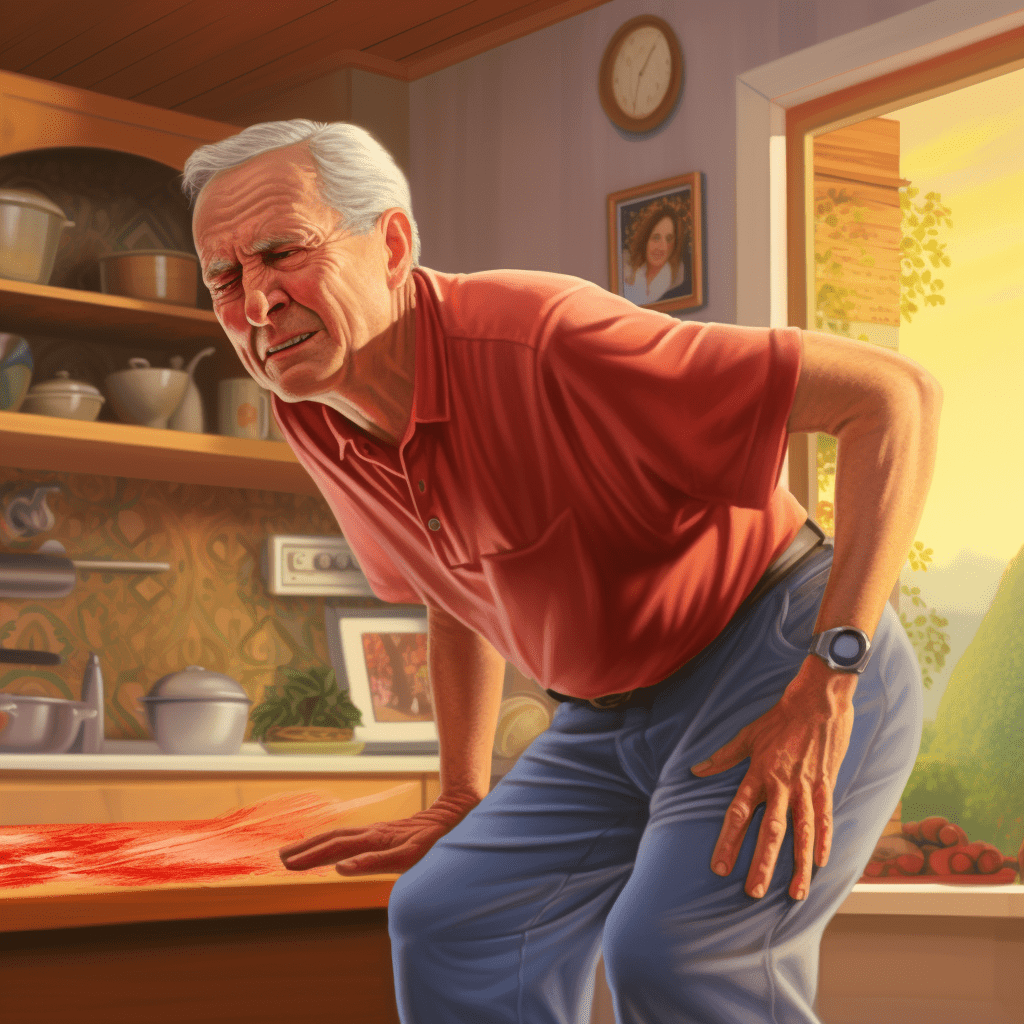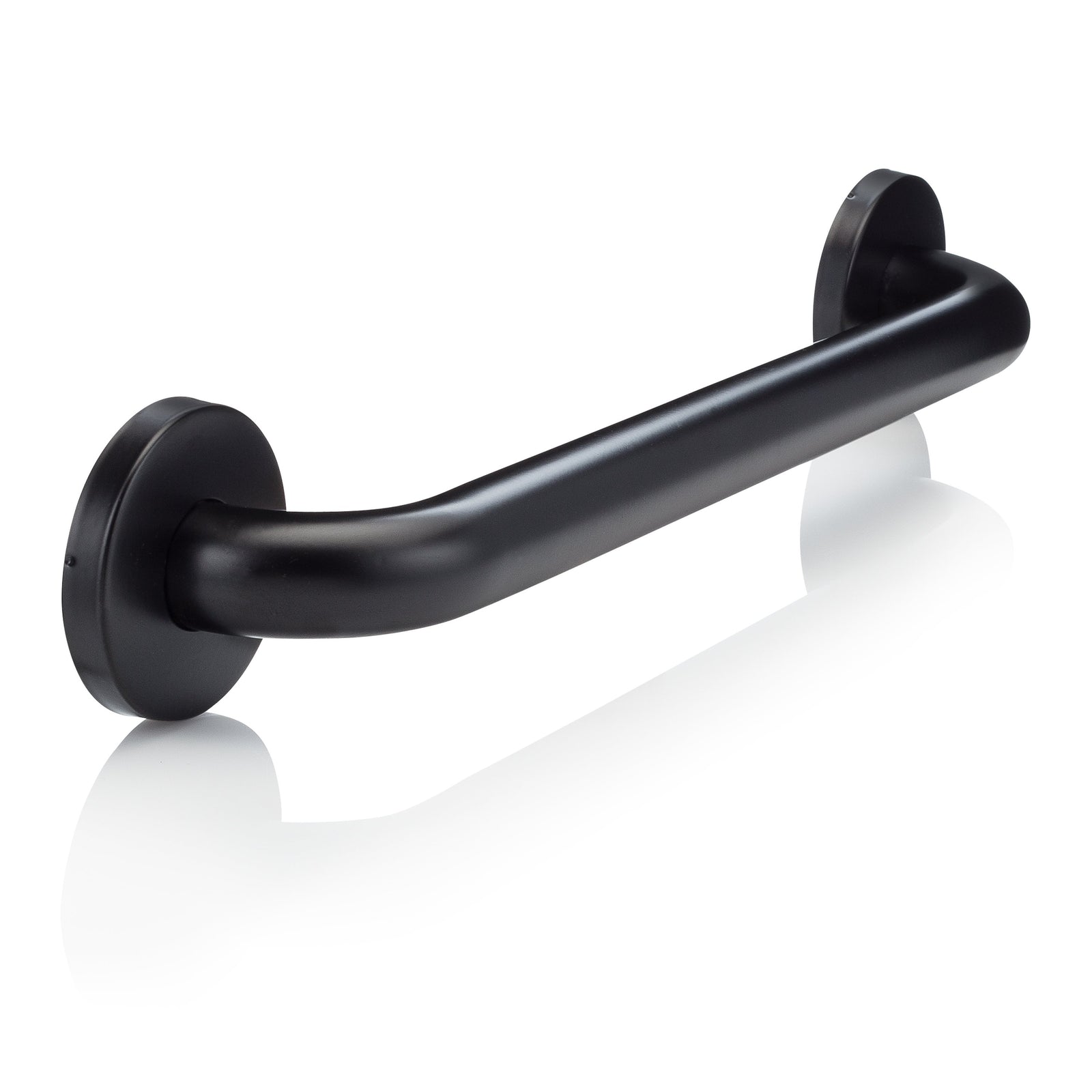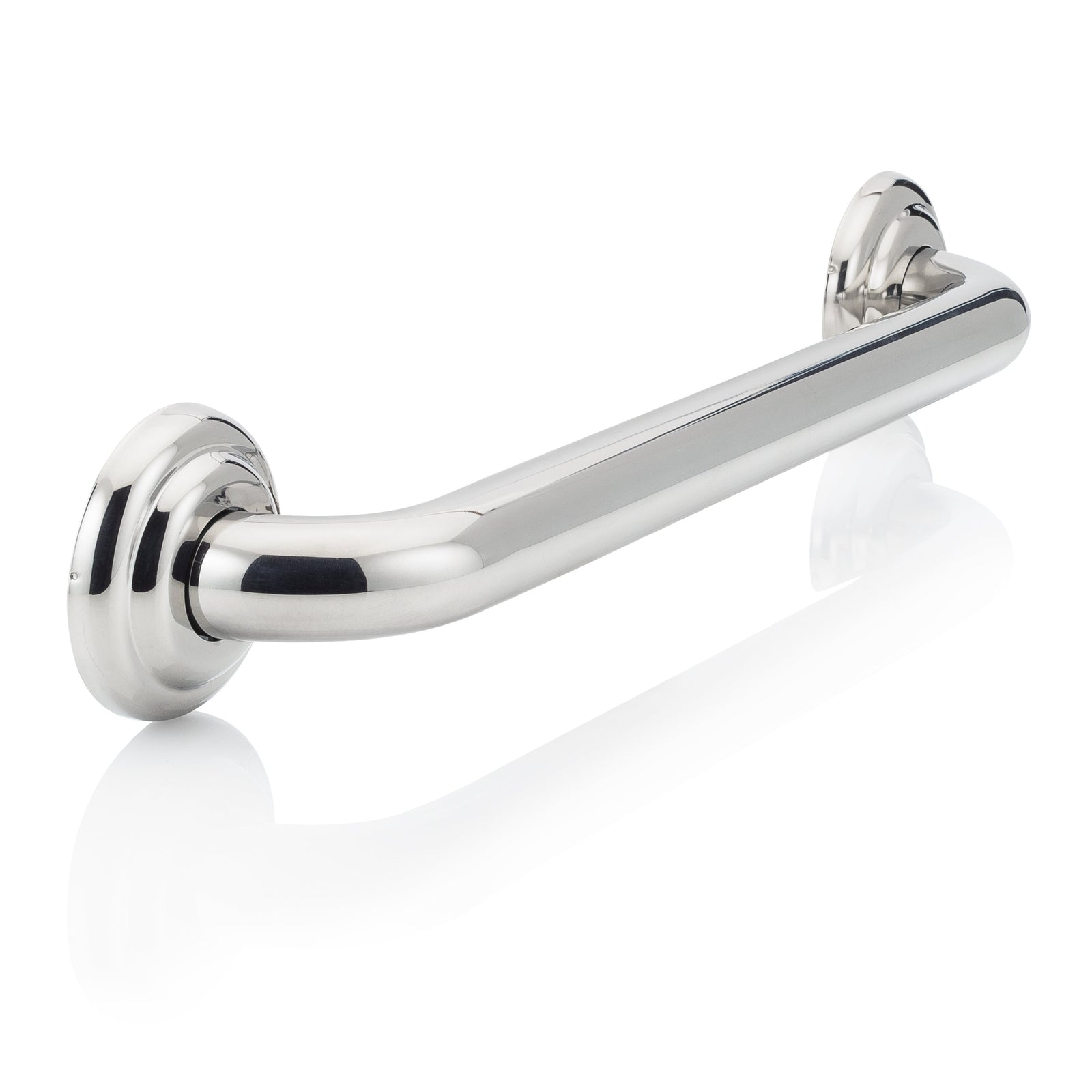The Importance of Bath Safety for People with Low Vision: Tips and Tricks
When it comes to maintaining independence and safety in the bathroom, individuals with low vision face unique challenges. The bathroom can be a hazardous place, with slippery floors, sharp edges, and difficult-to-see obstacles. However, by implementing a few simple tips and tricks, bath safety can be greatly improved for those with low vision. In this article, we will explore the importance of bath safety for individuals with low vision and provide practical strategies to enhance their bathroom experience. From installing grab bars and non-slip mats to utilizing high-contrast colors and proper lighting, these measures can make all the difference in preventing accidents and promoting confidence. Whether you or a loved one is living with low vision, this guide will equip you with the knowledge and tools needed to create a safe and accessible bathroom environment. Don't let low vision compromise your bathing experience – prioritize bath safety today!
Understanding low vision and its impact on bath safety
Low vision, often caused by eye conditions such as macular degeneration or glaucoma, refers to a visual impairment that cannot be fully corrected with glasses, contact lenses, or medical treatment. Individuals with low vision may have difficulty seeing details, distinguishing colors, or perceiving depth. These visual limitations can pose significant challenges in the bathroom, where hazards lurk around every corner. Without proper precautions, accidents can happen, leading to injuries and a loss of independence.
The impact of low vision on bath safety extends beyond physical limitations. Fear and anxiety often accompany the loss of visual acuity, making individuals with low vision hesitant to engage in daily activities, such as bathing. The fear of falling or not being able to navigate the bathroom safely can lead to social isolation and a decline in overall well-being. Understanding the specific needs and challenges faced by individuals with low vision is crucial in implementing effective bath safety measures.
Common bath safety hazards for people with low vision
The bathroom presents numerous safety hazards for individuals with low vision. Slippery floors, sharp edges, and difficult-to-see obstacles can increase the risk of falls and injuries. Here are some common hazards to be aware of:
1. Slippery surfaces: Bathrooms are often filled with smooth and slippery surfaces, such as tiles, which can become treacherous for individuals with low vision. Water splashes and soap residue further contribute to the slippery nature of the floors.
2. Lack of grab bars: Grab bars are essential for individuals with low vision to maintain balance and stability while moving around the bathroom. The absence of grab bars near toilets, tubs, and showers increases the risk of falls.
3. Poor lighting: Inadequate lighting makes it difficult for individuals with low vision to navigate the bathroom and identify potential hazards. Shadows and dimly lit areas can further compromise safety.
4. Lack of contrast: Low vision often affects color perception. Bathrooms with low contrast between the walls, floors, and fixtures can make it challenging to distinguish between different elements, increasing the risk of accidents.
5. Clutter and disorganization: A cluttered bathroom can be overwhelming for individuals with low vision. Objects on the floor or countertops can pose tripping hazards, while disorganized storage makes it difficult to locate essential items.
By addressing these common hazards, individuals with low vision can significantly improve their bath safety and regain confidence in their daily routine.
Tips for improving bath safety for individuals with low vision
Ensuring bath safety for individuals with low vision requires a combination of environmental modifications, assistive devices, and practical strategies. Here are some tips and tricks to enhance bath safety:
1. **Install grab bars**: Installing sturdy grab bars near toilets, tubs, and showers provides stability and support for individuals with low vision. These grab bars should be securely mounted and capable of bearing weight.
2. **Use non-slip mats**: Placing non-slip mats in the bathtub or shower floor helps reduce the risk of slips and falls. These mats provide additional traction and stability, making bathing safer for individuals with low vision.
3. **Improve lighting**: Adequate lighting is essential for individuals with low vision to navigate the bathroom safely. Install bright overhead lights, task lighting near mirrors, and motion-activated night lights to ensure visibility.
4. **Utilize high-contrast colors**: Opt for high-contrast colors when choosing bathroom fixtures, such as toilets, sinks, and countertops. Contrasting colors between the walls and floors can help individuals with low vision distinguish between different areas of the bathroom.
5. **Organize bathroom essentials**: Keep the bathroom organized and free from clutter to minimize the risk of accidents. Use storage solutions such as wall-mounted shelves, baskets, and caddies to keep essential items within easy reach and prevent tripping hazards.
6. **Consider assistive devices**: Various assistive devices are available to aid individuals with low vision in the bathroom. These include magnifying mirrors, large-print labels for toiletries, and tactile markers for controlling water temperature.
Implementing these tips and tricks can greatly enhance the bath safety of individuals with low vision, promoting independence and confidence in their daily routine.
In addition to the tips mentioned above, several modifications and assistive devices can further improve bath safety for individuals with low vision:
1. Walk-in showers: Installing a walk-in shower eliminates the need to step over a high tub wall, reducing the risk of falls. These showers feature a low or no threshold entry, making them easily accessible for individuals with low vision.
2. Raised toilet seats: Raised toilet seats make it easier for individuals with low vision to sit and stand from the toilet. They provide added height and stability, minimizing the strain on joints and reducing the risk of falls.
3. Contrasting tape or paint: Applying contrasting tape or paint to the edges of steps, bathtub edges, and other potential hazards can help individuals with low vision identify these areas more easily.
4. Talking bathroom scales: Talking bathroom scales can assist individuals with low vision in monitoring their weight independently. These scales announce the weight measurement aloud, ensuring accurate readings.
5. Accessible faucets and controls: Replace traditional knobs and controls with accessible options, such as lever-style handles or touch-sensitive faucets. These modifications make it easier for individuals with low vision to operate faucets and avoid scalding or burning.
By incorporating these modifications and assistive devices, individuals with low vision can create a more accessible and safer bathroom environment.
Importance of proper lighting and contrast in the bathroom
Proper lighting and contrast play a crucial role in bath safety for individuals with low vision. Bright, evenly distributed lighting helps individuals with low vision navigate the bathroom more effectively and identify potential hazards. Here are some key considerations:
1. Natural light: Maximize natural light by using sheer curtains or blinds that allow light to filter in while maintaining privacy. Natural light creates a welcoming and well-lit atmosphere in the bathroom.
2. Task lighting: Install task lighting near mirrors, countertops, and other areas where detailed tasks are performed. This additional lighting helps individuals with low vision see more clearly and perform daily grooming activities with ease.
3. Motion-activated lighting: Motion-activated lighting is a convenient option for individuals with low vision. These lights automatically turn on when motion is detected, ensuring visibility without the need to locate light switches.
4. Contrasting colors: Utilize contrasting colors to improve visibility and depth perception. Choose a color scheme that provides a clear distinction between walls, floors, fixtures, and other elements in the bathroom.
By prioritizing proper lighting and contrast, individuals with low vision can minimize the risks associated with navigating the bathroom.
Non-slip flooring options for enhanced bath safety
Slippery floors pose a significant risk for individuals with low vision. To enhance bath safety, consider the following non-slip flooring options:
1. Textured tiles: Choose textured tiles for the bathroom floor to provide additional traction and reduce the risk of slips and falls. These tiles have a rougher surface that enhances grip, even when wet.
2. Vinyl flooring: Vinyl flooring is a popular choice for its slip-resistant properties. It offers a softer and more forgiving surface, reducing the impact of falls and providing a safer environment for individuals with low vision.
3. Rubber mats: Place rubber mats strategically in areas prone to water splashes, such as in front of the sink and bathtub. These mats provide an extra layer of grip and stability, reducing the risk of accidents.
4. Epoxy coatings: Epoxy coatings can be applied to existing flooring to create a non-slip surface. These coatings add texture and grip, making it easier for individuals with low vision to walk confidently in the bathroom.
By selecting non-slip flooring options, individuals with low vision can significantly reduce the risk of falls and injuries in the bathroom.
Organization and accessibility solutions for bath products
Maintaining an organized and clutter-free bathroom is crucial for individuals with low vision. Here are some organization and accessibility solutions to consider:
1. Wall-mounted storage: Install wall-mounted shelves or cabinets to keep essential bath products within easy reach. These storage solutions help individuals with low vision locate items more efficiently, reducing the risk of accidents.
2. Bathroom caddies: Use bathroom caddies or baskets to organize frequently used items, such as shampoo, soap, and toothbrushes. Keep these items in a designated spot to ensure accessibility and prevent clutter.
3. Large-print labels: Apply large-print labels to toiletries and other products to make them easier to identify for individuals with low vision. These labels can be created using high-contrast colors and large font sizes.
4. Tactile markers: Place tactile markers on control knobs, such as those for the shower and faucet. These markers provide a tactile reference point, allowing individuals with low vision to adjust water temperature and flow more accurately.
By implementing these organization and accessibility solutions, individuals with low vision can navigate the bathroom more confidently and independently.
Assistance and support options for individuals with low vision
Individuals with low vision may require additional assistance and support to ensure bath safety. Here are some options to consider:
1. Home care services: Home care services can provide assistance with daily activities, including bathing, for individuals with low vision. Trained professionals can offer support and guidance to ensure bath safety and independence.
2. Support groups: Joining support groups for individuals with low vision can provide a sense of community and a platform to share experiences and tips for bath safety. These groups offer emotional support and valuable resources.
3. Occupational therapy: Occupational therapists can provide specialized assessment and training to individuals with low vision. They can recommend specific strategies and assistive devices to enhance bath safety and overall independence.
4. Family and friends: Family and friends can offer valuable assistance and support in maintaining bath safety for individuals with low vision. Regular check-ins, help with environmental modifications, and assistance with daily activities can make a significant difference.
By exploring these assistance and support options, individuals with low vision can access the resources they need to maintain bath safety and independence.
Bath safety resources and organizations
Several resources and organizations can provide guidance and support for individuals with low vision. Here are a few worth exploring:
1. American Foundation for the Blind: The American Foundation for the Blind offers resources, support, and advocacy for individuals with low vision. They provide helpful information on assistive technology, accessibility, and bath safety.
2. National Federation of the Blind: The National Federation of the Blind is a leading organization that promotes the independence and well-being of individuals with low vision. They offer resources, training programs, and advocacy for bath safety and overall accessibility.
3. Occupational therapists: Consulting with an occupational therapist specializing in low vision can provide personalized recommendations and strategies for bath safety. These professionals can assess individual needs and suggest appropriate modifications and assistive devices.
4. Local support groups: Local support groups for individuals with low vision often provide valuable information, resources, and peer support. Connecting with others facing similar challenges can offer comfort and practical advice for bath safety.
By utilizing these resources and organizations, individuals with low vision can access a wealth of knowledge and support to enhance bath safety.
Conclusion: Empowering individuals with low vision to maintain independence and safety in the bathroom
Bath safety is of utmost importance for individuals with low vision. By understanding the unique challenges and implementing practical strategies, individuals with low vision can maintain their independence and confidence in the bathroom. From installing grab bars and non-slip mats to utilizing high-contrast colors and proper lighting, these measures can significantly reduce the risk of accidents and promote a safe bathing experience. Additionally, modifications, assistive devices, and support options are available to further enhance bath safety. By prioritizing bath safety and utilizing the resources and organizations available, individuals with low vision can navigate the bathroom with ease and maintain their overall well-being. Don't let low vision compromise your bathing experience – take the necessary steps to prioritize bath safety today!
---
To summarize, this blog article explores the importance of bath safety for individuals with low vision and provides practical strategies to enhance their bathroom experience. It covers a range of topics, including understanding low vision and its impact on bath safety, common bath safety hazards, tips for improving bath safety, recommended modifications and assistive devices, the importance of proper lighting and contrast, non-slip flooring options, organization and accessibility solutions, assistance and support options, bath safety resources and organizations, and concludes by empowering individuals with low vision to maintain independence and safety in the bathroom. With a comprehensive approach to bath safety, individuals with low vision can navigate their daily routine confidently and safely.















Leave a comment (all fields required)